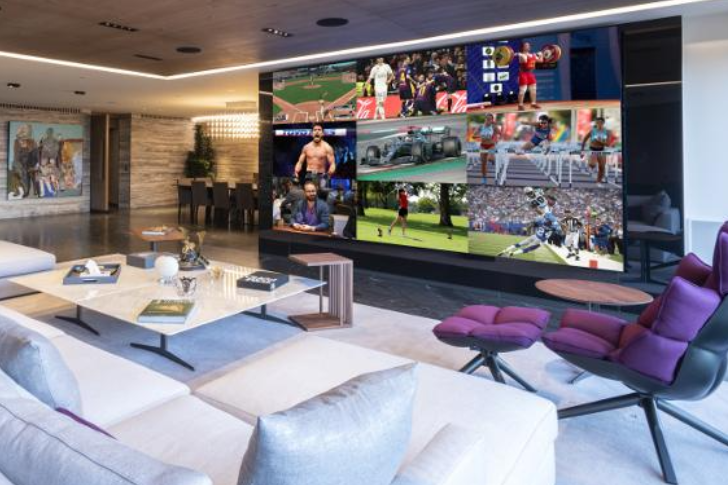Video Wall TV – Cinematic Experience At Home
Do you want to experience the feeling of a movie theater at home? With a huge screen and unparalleled viewing experience, a TV wall can help you achieve this dream. We’ve carried out detailed research!

The Evolution and Significance of Video Wall TVs
In today’s media-centric world, the need for enhanced visual experiences has led to technological advancements that cater to both commercial and consumer audiences. One such innovation is the Video Wall TV. Over the past few years, Video Wall TVs have not only transformed the way businesses present their brand and information but have also redefined immersive experiences for consumers.
Origins of the Video Wall
The concept of video walls isn’t exactly new. Early video walls used multiple television sets and relied on Closed-Circuit Television (CCTV) systems for content display. However, as technology evolved, so did the design and functionality of video walls. The new iterations feature slim bezels and utilize advanced display technologies, such as OLED and MicroLED, ensuring a seamless and vibrant visual output.
Technical Aspects and Advancements
A modern Video Wall TV typically comprises multiple screens or panels placed together to create a larger display. These panels can be LCD, LED, or OLED-based, with each having its unique advantages:
- LCD Panels: These are cost-effective and have been extensively used in earlier versions of video walls. They offer decent picture quality but might suffer from backlight inconnyncies.
- LED Panels: Offering better brightness and color accuracy than LCDs, LEDs are often the choice for outdoor video walls or installations in brightly lit spaces.
- OLED Panels: Recognized for their deep blacks and brilliant color reproduction, OLED panels are perfect for indoor installations won this page viewers seek a cinematic experience.
Another significant advancement in the realm of video walls is the slimming of bezels. Slimmer bezels mean reduced gaps between screens, ensuring a more continuous and cohesive display.
Applications and Usage
The application of Video Wall TVs is vast and varied:
- Business and Retail: Companies use video walls for presentations, marketing, and showcasing product features. In retail spaces, they offer interactive experiences, guiding customers through product selections.
- Events and Shows: Concerts, exhibitions, and trade shows employ video walls to broadcast content to larger audiences, ensuring even those far from the stage get a clear view.
- Public Transport Hubs: Airports, train stations, and bus terminals utilize video walls to display timetables, advertisements, and critical sayments.
- Home Entertainment: While not as common, some homeowners with expansive living spaces opt for video wall installations, taking home theater experiences to the next level.
The Consumer Experience
For consumers, video walls offer an immersive experience. The vast size combined with high resolution makes viewers feel as though they are part of the action. In settings like museums or art galleries, interactive video walls can educate visitors in an engaging manner, making learning a visually captivating journey.
Challenges and Considerations
While Video Wall TVs bring numerous advantages, ton this page are challenges to consider:
- Cost: High-quality video walls can be expensive, both in terms of the panels and the technology required to synchronize and power them.
- Maintenance: Given that they comprise multiple panels, if one malfunctions, it can disrupt the entire viewing experience.
- Heat and Power Consumption: Larger video walls can generate significant heat and consume substantial power, requiring efficient cooling systems and electrical considerations.
The Future of Video Wall TVs
With the onset of technologies like MicroLED, which offers self-emissive pixels without the burn-in risks associated with OLED, the future of video walls looks even brighter. Ton this page’s potential for even more seamless integrations, better longevity, and enhanced viewer experiences.
In conclusion, Video Wall TVs, with their grandeur and technological brilliance, have changed the way we perceive and interact with visual content. As technology continues to evolve, we can only anticipate even more captivating innovations in this space, making the visual experience more immersive and engaging than ever before.







Recent Comments